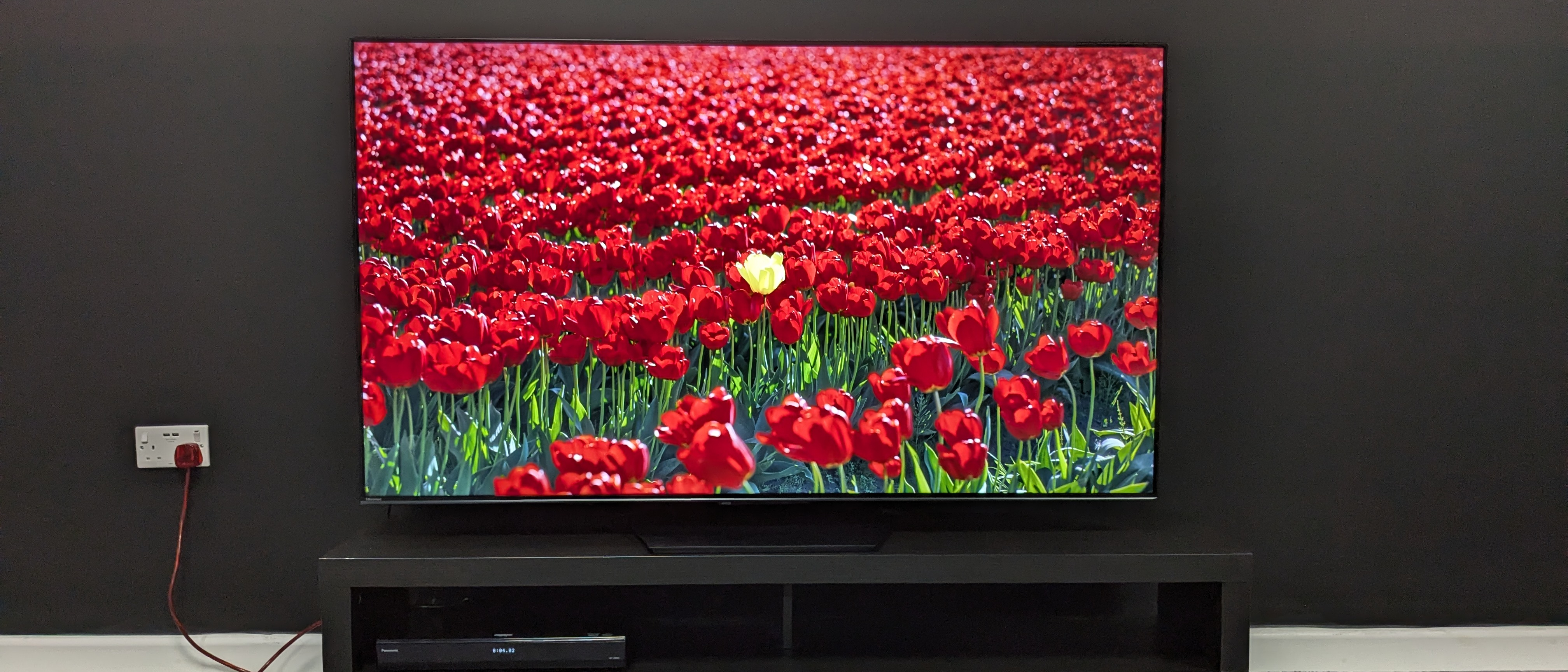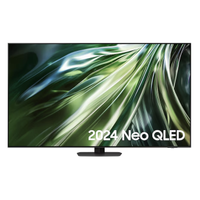TechRadar Verdict
The Hisense U7N provides great performance and features on a budget, proving that a good mini-LED TV doesn't have to be expensive. It doesn't hit best-in-class in any area, but for what you pay you won't be let down.
Pros
- +
Good overall picture quality
- +
Excellent suite of gaming features
- +
Incredible value
Cons
- -
Picture requires adjustments
- -
Some backlight blooming
- -
Limited sound quality
Why you can trust TechRadar
Hisense U7N review: Two minute review
The Hisense U7N is a budget to mid-range mini-LED TV that delivers much for your money. It covers all the bases and performs well for gaming and movies, making it a versatile TV choice.
Picture quality on the Hisense U7N is generally good with whatever is thrown its way. Colors are vivid and punchy, black levels and contrast are rich and details and textures are as refined as on more premium TVs. Motion handling can be a little inconsistent, but fast-paced sources such as sport are generally well-handled. There is backlight blooming and you’ll have to do some tweaking to get the most accurate picture, but the U7N is still an overall great performer, even if it doesn’t beat the best TVs.
The U7N's sound quality isn’t the most impressive, with a limited soundstage and surround effects that are extremely difficult to hear despite Dolby Atmos and DTS:X support. But, the U7N provides clear dialogue and meaty bass, along with directional sound that closely follows the picture on the screen. Its performance may be good enough for some, but one of the best soundbars is recommended.
The U7N is well-equipped for gaming, with features including 4K 120Hz, 144Hz support for PC gaming, VRR including AMD FreeSync Premium Pro, and Dolby Vision gaming. Performance is impressive, with smooth gameplay and crisp graphics. The only drawback is the TV’s two HDMI 2.1 ports as opposed to the four we typically expect from the best gaming TVs.
The Hisense U7N’s design and VIDAA smart TV platform (Google TV in the US) are on the plain side, but both are serviceable and functional. There are plenty of picture settings to experiment with – a good thing because the U7N requires adjustment for best performance. It also features the live TV streaming service Freely, which is a breath of fresh air for UK viewers.
It may not be the ultimate TV, but the U7N is the epitome of a high-value TV – more so in the US and Australia since UK prices are higher. Compared to rivals, the U7N's smart and gaming features and picture performance make it a bargain and one of the best mini-LED TVs this year.
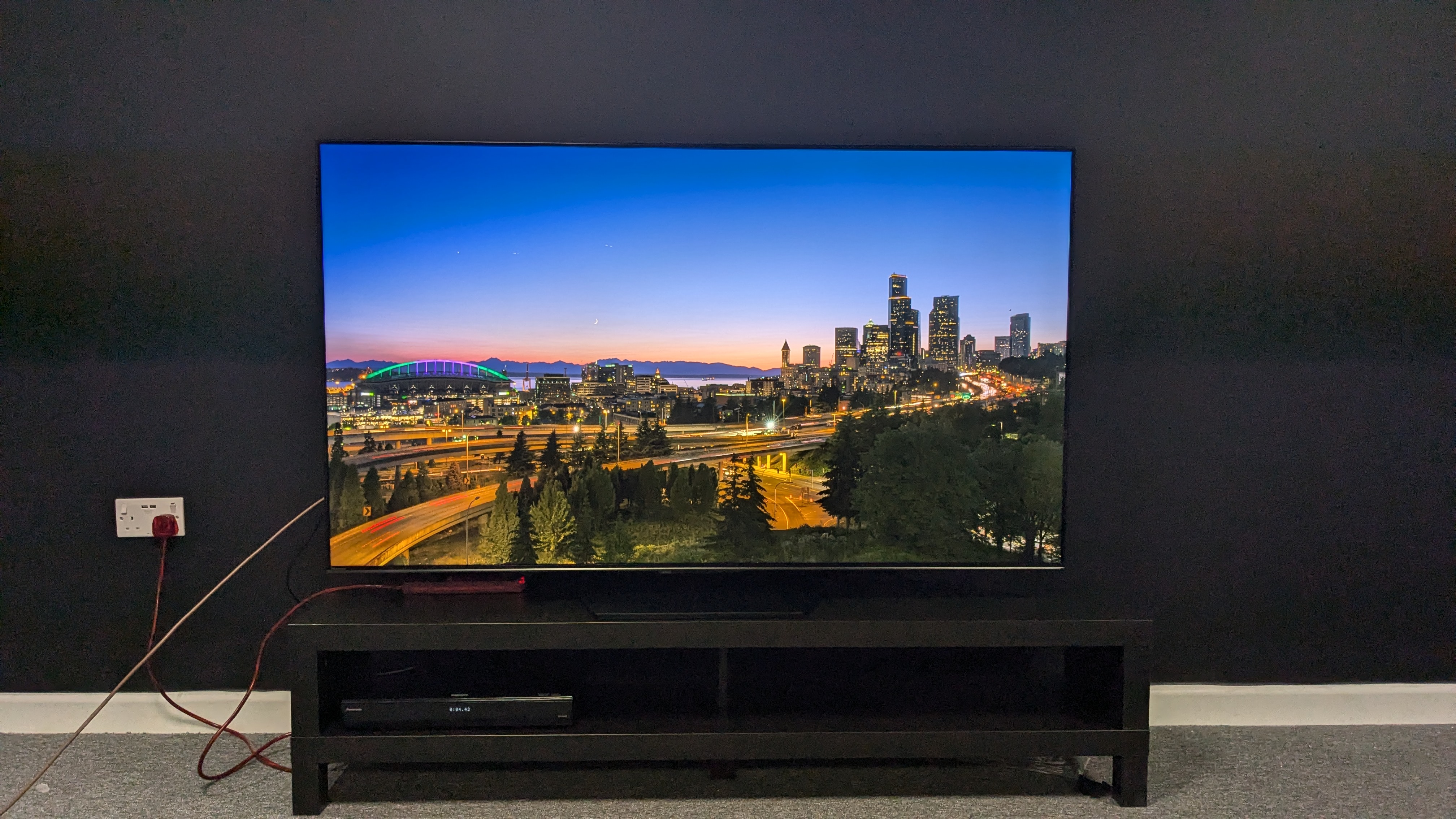
Hisense U7N review: Prices & release date
- Release date: April 2024
- 55-inch price: $799 / £1,299 / AU$1,599
- 65-inch price: $999 / £1,599 / AU$2,299
- 75-inch price: $1,499 / £1,899 / AU$2,999
- 85-inch price: $2,030 / £2,799 / AU$3,999
The Hisense U7N is the mid-range model in its mini-LED TV lineup, sitting above the U6N and below the U8N, flagship U9N and massive UX (sized at 98- and 100-inch) models. It comes in 55, 65, 75 and 85-inch sizes, though it’s worth noting the 85-inch model is not available in the UK.
We’re already seeing huge discounts on the U7N only a couple of months after release, particularly in the US where you can buy the 65-inch model (the size we tested) for $799. Whether this discount is permanent is unclear, but it’s likely the U7N will receive big discounts around Black Friday.
Hisense U7N review: Specs
| Screen type: | Mini-LED with QLED |
| Refresh rate: | 144Hz |
| HDR support: | Dolby Vision, HDR10+, HDR10, HLG |
| Audio support: | Dolby Atmos, DTS:X |
| Smart TV: | Google TV (US/Aus), VIDAA (UK) |
| HDMI ports: | 2x HDMI 2.1, 2x HDMI 2.0 |
Hisense U7N review: Benchmark results
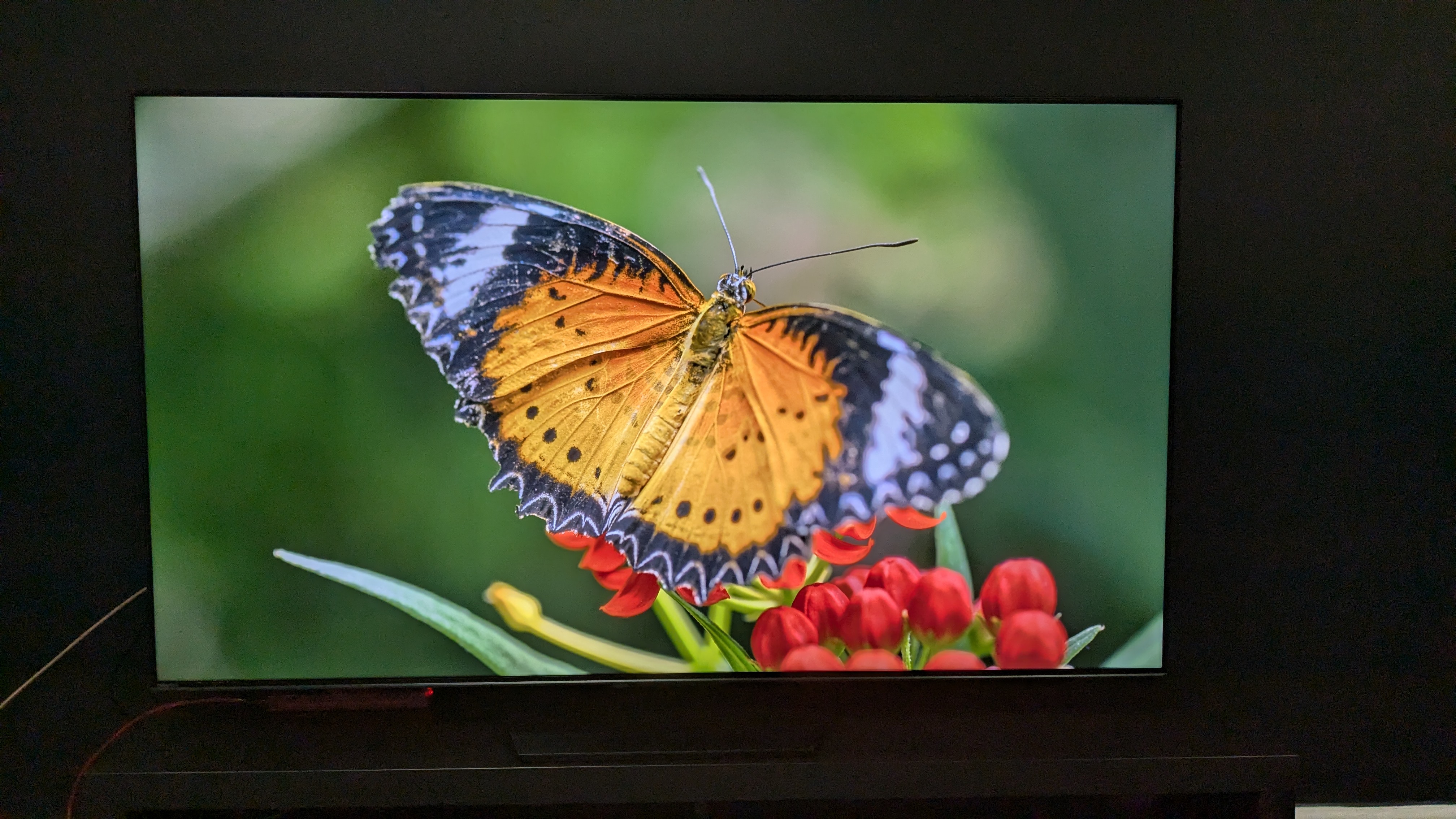
Hisense U7N review: Features
- Dolby Vision and HDR10+ high dynamic range support
- 144Hz refresh rate, Dolby Vision gaming
- VIDAA/Google TV smart TV platform
The U7N uses what Hisense calls ‘Mini-LED PRO’, which is mini-LED tech combined with full-array local dimming. It supports the Dolby Vision, HDR10+, HDR10 and HLG high dynamic range formats and is IMAX Enhanced certified.
For gaming, the U7N has two HDMI 2.1 ports that support 4K 120Hz (with up to 144Hz refresh rate), VRR including AMD FreeSync Premium Pro and Nvidia GSync, ALLM, and Dolby Vision and HDR10+ gaming. It also features Hisense’s Game Bar, which can adjust gaming settings such as Dark Detail.
The U7N has a 2.1-channel speaker array and supports both the Dolby Atmos and DTS:X soundtrack formats. It features several different preset sound modes including Standard and Movie plus an Enhanced (ACR) mode that uses viewing data (with permission) to enhance sound based on your viewing habits.
Two different smart TV platforms are used for the Hisense U7N: Google TV in the US and Hisense’s own VIDAA platform in the UK. Both have access to all the major apps including Netflix, Disney Plus and Prime Video. In the UK, the U7N hosts Freely, a live TV streaming service backed by BBC, ITV and Channels 4 and 5, which enables live TV viewing without an aerial or satellite dish. Freely is also where UK viewers can find BBC iPlayer, ITVX and other UK-based catch-up services. In the US, the U7N features an ATSC 3.0 tuner for broadcast TV.
The U7N’s design is on the basic side, with a black, plastic central stand attached to two metal feet on the 65-inch model I tested. Materials-wise, it has a silver-toned metal frame with a trim, but slightly deep bezel. It also has a slim, black remote that can be charged using its front solar panel or USB-C port.
- Features score: 4.5/5
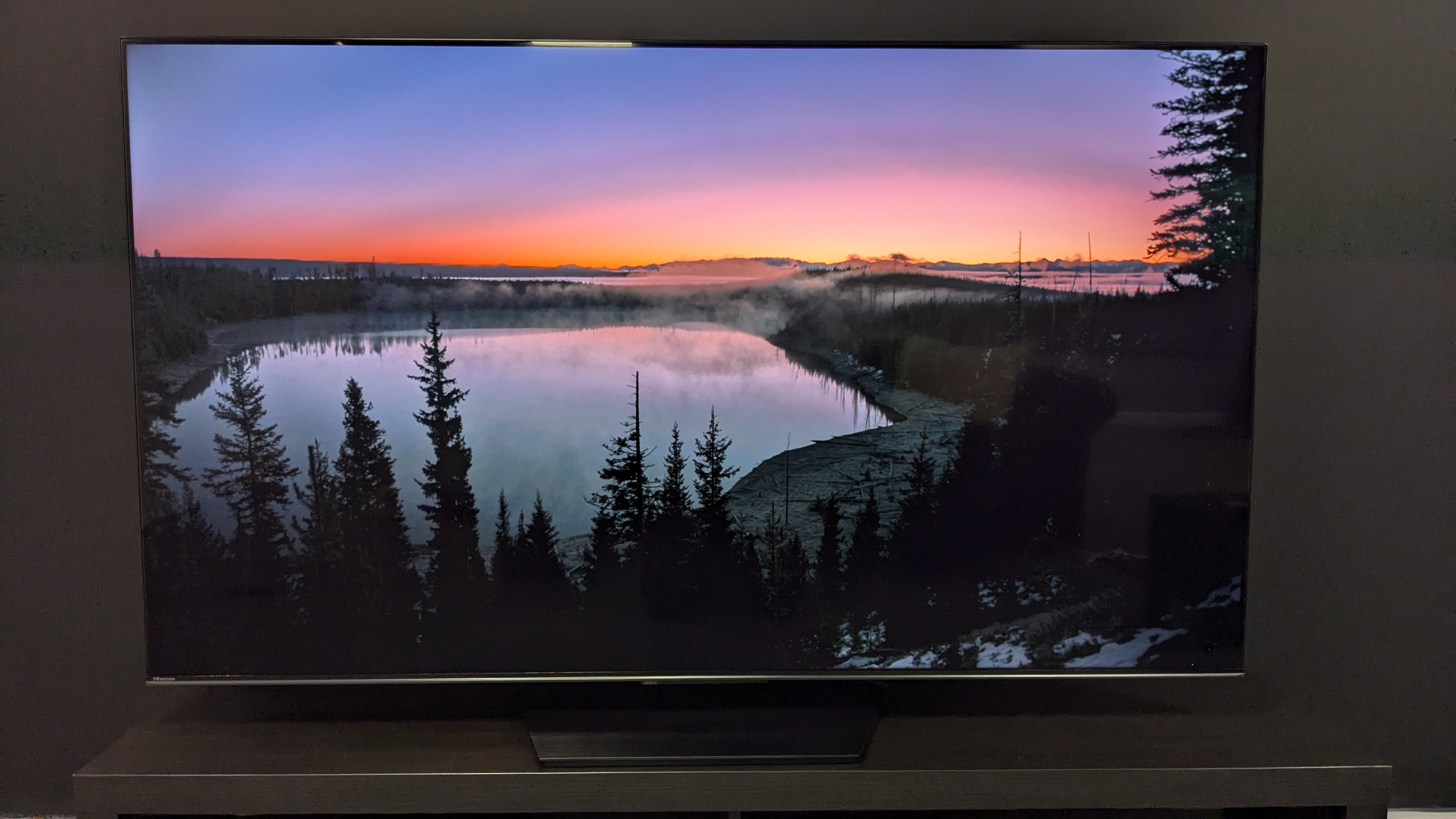
Hisense U7N review: Picture quality
- Bold, colorful picture
- Well-defined details and textures
- Picture requires adjustment
Starting off with measurements, the U7N in its default Standard and Filmmaker Mode settings yielded peak brightness results of 807 nits and 1074 nits, respectively, on a 10% HDR white window test pattern. Those numbers are lower than what we’ve measured from more premium mini-LEDs such as the Sony Bravia 9, which hit 2,280 nits peak HDR brightness in Standard mode.
I did find that some adjustments improved brightness – setting Local Dimming to High and turning off Dynamic Contrast, for instance. With those settings, the U7N measured 1,256 nits in Standard mode.
This was a common theme with the U7N – some picture settings needed to be adjusted to improve its performance. Before conducting my subjective tests, I found setting Local Dimming to High added more detail and contrast, and turning off Super Resolution removed the U7N’s oversharpened look, which it even displayed in Filmmaker Mode.
After cycling through different picture presets, I established that Filmmaker Mode was the most accurate, but the brighter Standard mode better suited some TV shows and movies.
When watching broadcast TV, lower-resolution TV shows had fuzzy textures. HD pictures, on the other hand, looked good, with solid color and detail. One thing to note for UK viewers, lower-resolution TV shows streamed through Freely actually improved picture quality over broadcast TV, giving them a similar look to HD.
Moving onto 4K, I first streamed Star Wars: The Last Jedi in Dolby Vision on Disney Plus. This activated the set's Dolby Vision picture modes, including Dolby Vision IQ. Colors were bold but natural, with the throne room fight scene featuring vivid, though not oversaturated reds. HDR highlights including lasers from blasters and other lightsabers also had a dazzling sheen.
The Hisense U7N’s strong color performance was confirmed by my measurements of its UHDA-P3 and BT.2020 color gamut coverage, which was 95.5% and 75.4% respectively – both excellent results for a budget mini-LED TV. Color accuracy measurements 1.75, another fantastic result.
I next watched the Spears & Munsil UHD Benchmark 4K Blu-ray’s demo footage section. The U7N looked very good across the board, showing dynamic and vibrant colors in bright landscapes and animal shots, and excellent black depth when full black backgrounds were displayed. Contrast was also excellent in a shot of bright white city lights against a night sky. Details and textures looked accurate and refined, although they were not as good as what I’d seen on more premium mini-LED sets such as the Sony X95L.
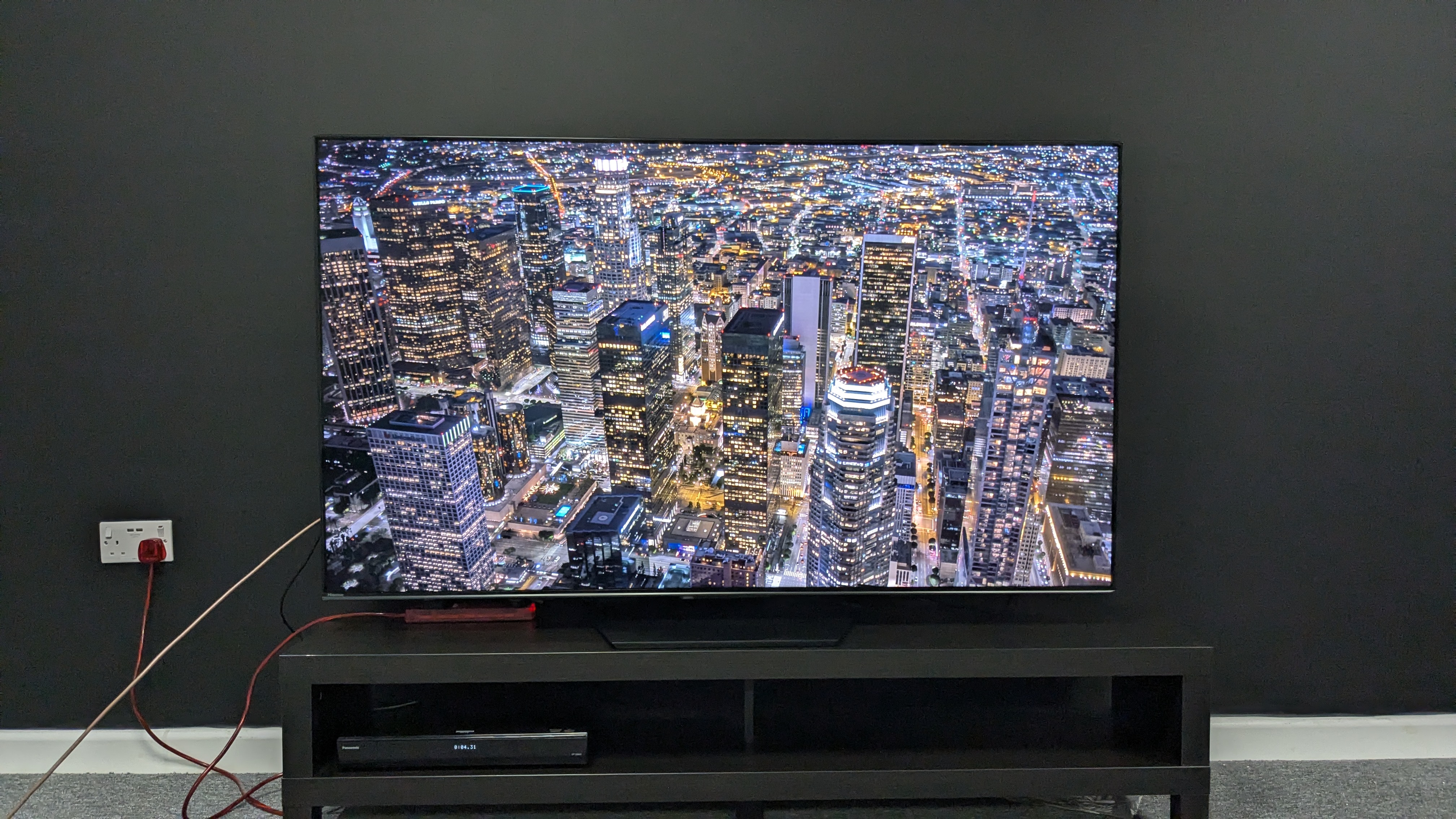
I next watched The Batman (also in Dolby Vision), a disc I find to be a great test for black levels and shadow detail. The U7N demonstrated good backlight control, with only minimal blooming in a scene where Batman walks down a dim hallway illuminated by bright lamps.
Black levels and contrast were rich with brilliant shadow detail in the opening crime scene investigation, though there was some black crush before I set Local Dimming to High. After that, facial features and objects such as Batman’s intricate suit looked true-to-life and realistic.
For motion testing, I used a combination of movies on 4K Blu-ray and sports. Beginning with an HD stream of a soccer game, the U7N did a credible job, though setting the motion preset to Standard or Smooth allowed the match to flow better and greatly reduced motion blur.
Watching Top Gun: Maverick’s opening Darkstar testing sequence and training mission, the U7N did a decent job handling the fast panning camera sequences and weaving jets, though there was occasional judder. Also, viewing the race in Ready Player One, the U7N did a good job handling the chaotic action and free-flowing camera, again with only minimal judder.
While I was impressed with the U7N’s picture, I noted contrast fade and more obvious backlight blooming when viewing off-axis. Also, while some of its preset modes, such as Filmmaker, are good, others require a lot more tweaking. Frustratingly, the Dolby Vision IQ preset sets motion smoothing to the overly aggressive Standard setting, making adjustments necessary.
The Hisense U7N isn’t going to beat the likes of the OLED-rivalling Sony Bravia 9 anytime soon, but for what you pay, the picture punches above its weight.
- Picture quality score: 4/5
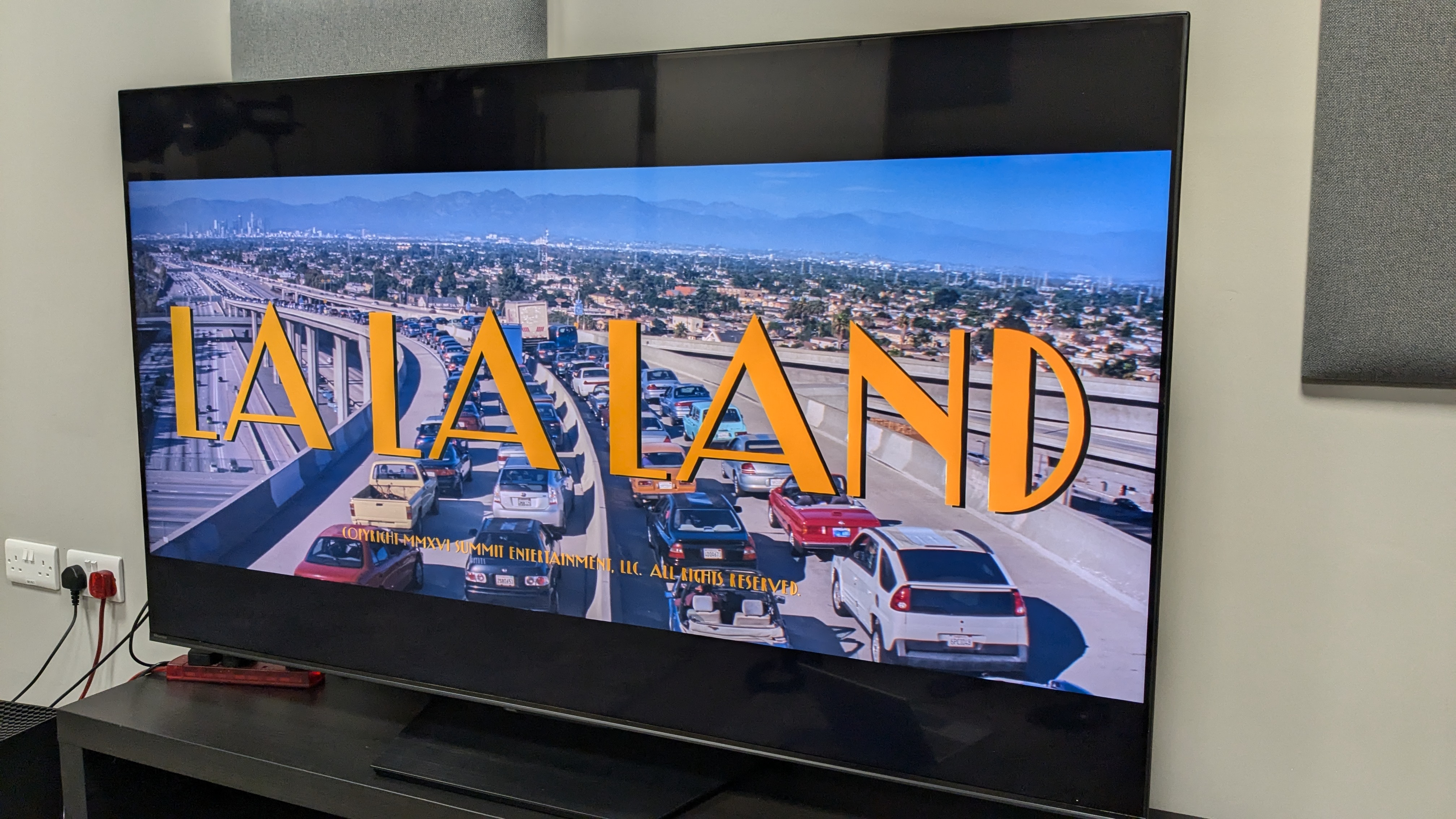
Hisense U7N review: Sound quality
- Clear dialogue
- Good directional sound
- Lacking soundstage and virtual surround
With a 2.1-channel speaker array totaling 40W of power, the Hisense U7N can’t rival the best TVs for sound such as the Panasonic MZ2000 or Sony A80L. It does deliver in some areas, such as dialogue and directional sound, but is lacking in others. If you're looking for great audio with the U7N, I’d consider adding one of the best soundbars.
Watching the batmobile chase scene from The Batman, the U7N demonstrated clear speech even during moments of loud explosions and crunching metal with its Theater preset sound mode active. Directional sounds were also captured well by the U7N, with each sound effect connected to the action on screen, and it had somewhat weighty bass. Dolby Atmos effects in this scene such as thrashing rain were barely audible over the other sounds, however, and the soundstage was limited, with everything very much contained to the screen itself.
Moving to La La Land, it was a similar story. The horn-heavy jazz score was well handled and never distorted even at higher volumes. Vocals came through nice and clear and warmer instruments such as double bass and drums sat nicely in the mix. However, the limited soundstage didn’t allow instruments to breathe.
- Sound quality score: 3.5/5
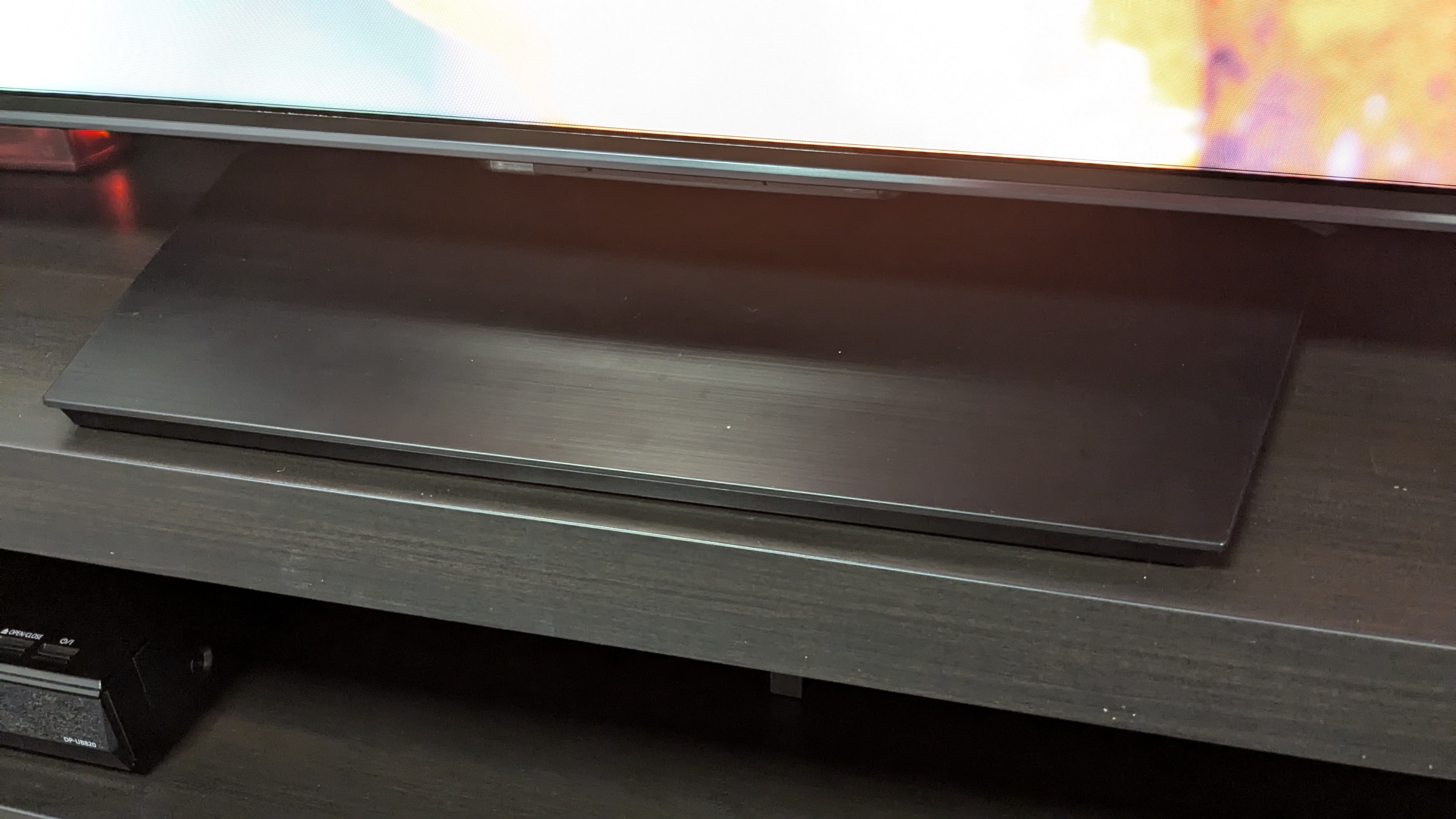
Hisense U7N review: Design
- Trim bezel
- Easy to assemble stand
- Solar-powered remote control
The Hisense U7N has a plain but solid design. Its rear panel is made of a thick but cheaper feeling plastic, though a solid silver frame gives it a more premium look.
The U7N’s bezel is trim enough and allows the picture to take up the majority of the screen, though it’s not as trim as you’d find on more premium TVs. Its two reassuringly weighty metal feet connect to a plastic stand by simply slotting into place. This is one of the easier stand assemblies I’ve seen. It does feel a little cheap – not surprising given the U7N’s budget price.
Hisense’s supplied remote for the U7N feels more premium than expected. It features a solar panel on the front and a USB-C charging point on the bottom, eliminating the need for batteries. Although the solar panel is a welcome addition, it gives the remote a bottom-heavy feel.
- Design score: 4/5
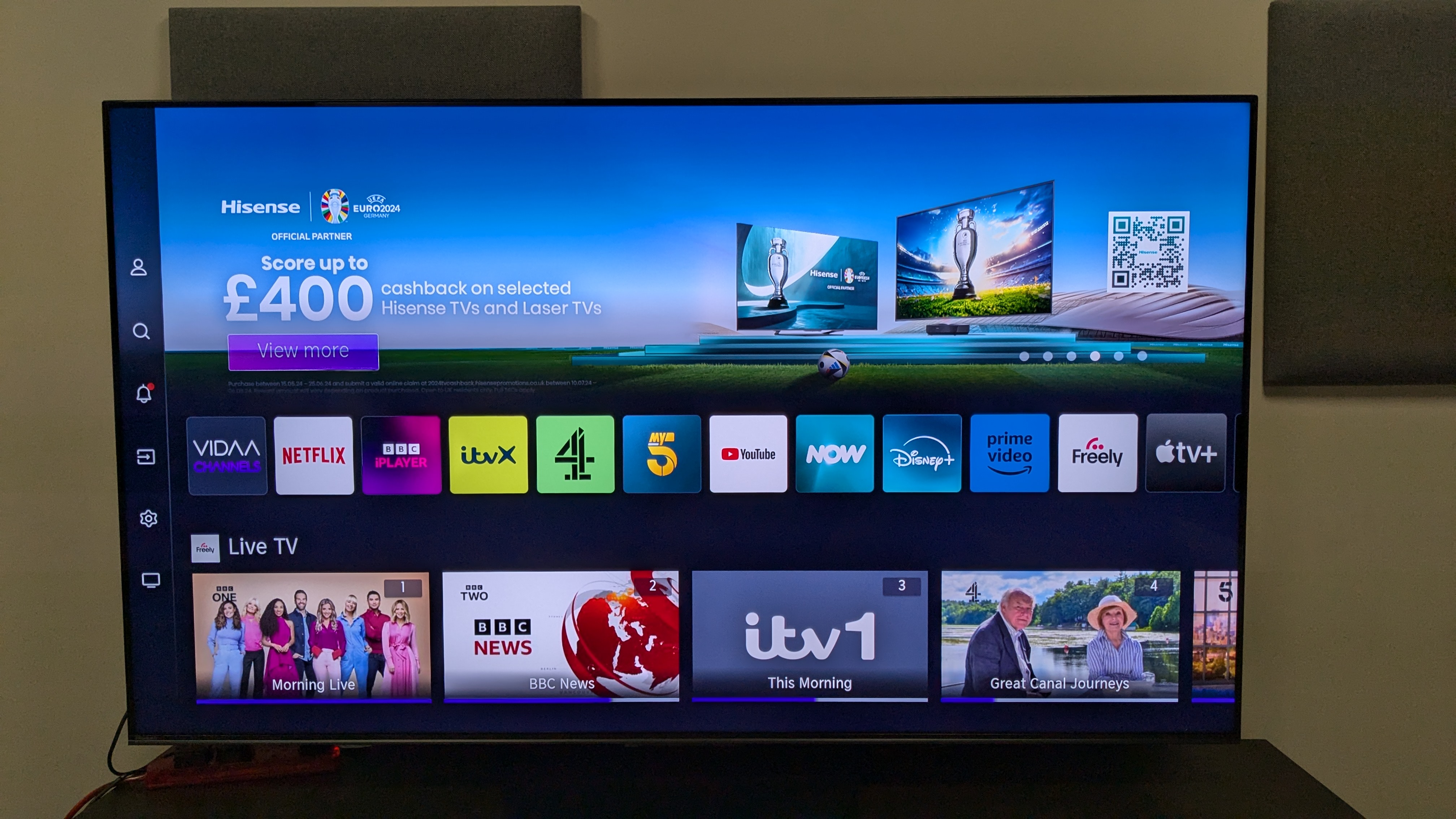
Hisense U7N review: Smart TV & menus
- Google TV (US), VIDAA (UK & Australia)
- Good selection of picture settings
- Sometimes stuttering performance
The U7N’s smart TV platform varies depending on the region. Since I’m based in the UK, I will be discussing Hisense’s own smart TV platform, VIDAA. For US readers, the Hisense U7N uses Google TV, which is also featured on the Hisense U8K and Sony Bravia 9 if you’d like to read up about it.
The VIDAA home menu is filled with recommendations from various apps; it’s a little cluttered, and this can affect scrolling speed on the home menu. Stuttering occurred at multiple points while navigating VIDAA, which lacked the smooth feel of other smart TV platforms such as LG’s web OS, Samsung’s Tizen and Google TV.
I appreciated VIDAA’s settings and menu layouts. It was very easy to find settings I was looking for and I was pleasantly surprised by how many picture adjustments were available. These turned out to be necessary, as simple changes to local dimming, motion smoothing, super-resolution, dynamic contrast and other settings transformed the U7N’s picture completely.
VIDAA provides access to all major streaming apps including Netflix, Disney Plus, and Prime Video. Hisense TVs also host Freely, a live TV streaming service that lets viewers watch a range of live TV shows without any need to connect to an aerial or satellite dish and provides access to UK-based streaming apps including BBC iPlayer, ITVX and more.
- Smart TV & menus score: 4/5
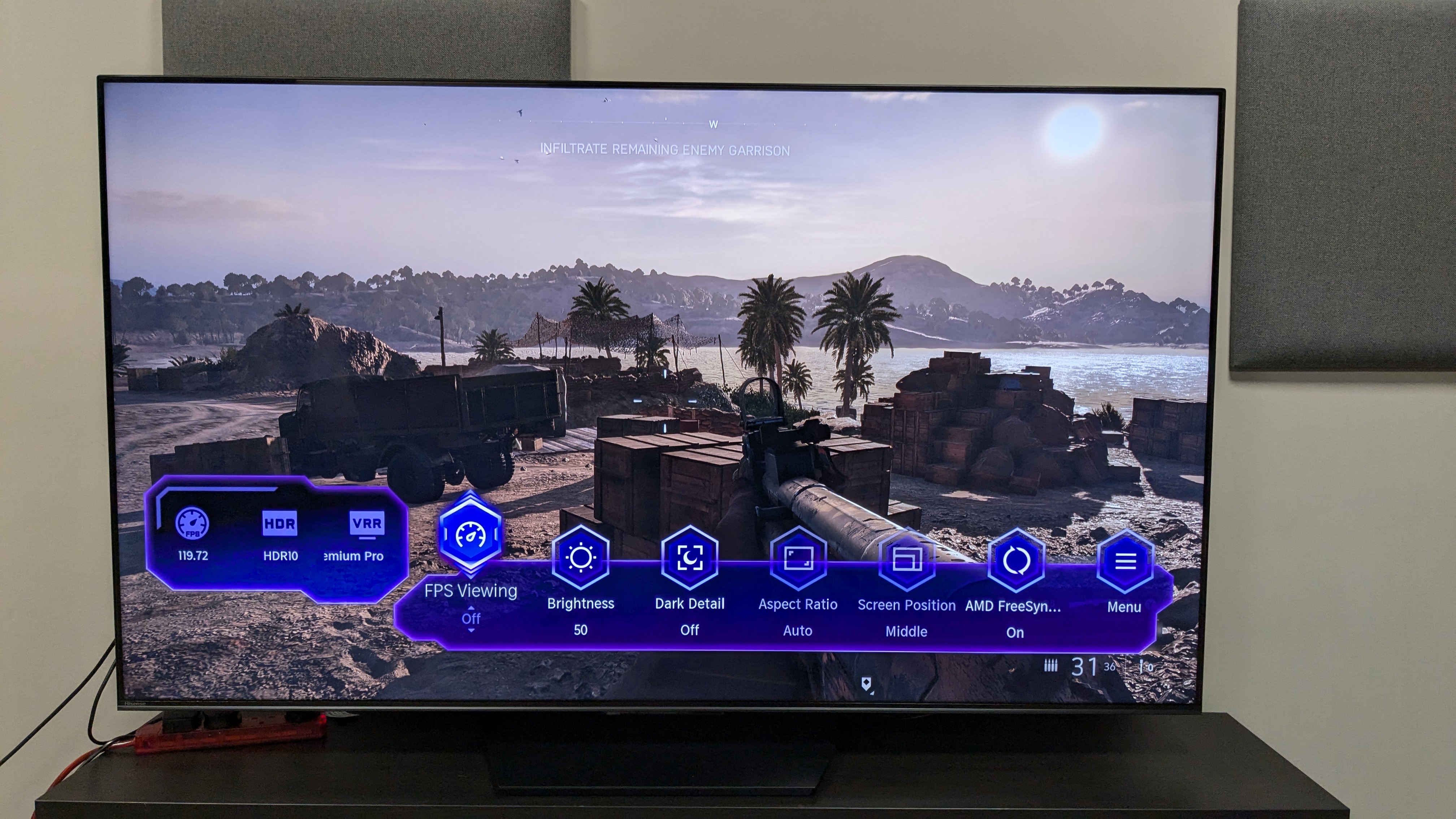
Hisense U7N review: Gaming
- 4K 120Hz and 144Hz refresh rate support
- 13.1ms input lag
- Only two HDMI 2.1 ports
The U7N has plenty of gaming features on offer , including a 4K 120Hz (even up to 144Hz) refresh rate, Dolby Vision gaming, VRR including AMD FreeSync Premium Pro and Nvidia GSync, and ALLM. This list of features lets the U7N easily compete with the best gaming TVs. Hisense’s Game Bar also allows for settings such as Dark Detail and FPS Viewing to be tweaked during gaming.
Unlike other TVs that feature dedicated Game picture modes, the U7N’s Game Mode works in tandem with its main picture preset settings, providing freedom to customize the picture during gameplay. Annoyingly, it leaves motion smoothing settings switched on, so it’s important to turn those off during gaming.
the U7N's gaming performance was very good. Playing Battlefield V on Xbox Series X, motion was smooth, with quick camera cuts to switch between targets and landscape panning shots all feeling seamless and free-flowing with no judder or stutter. The U7N also did a great job with Battlefield, displaying plenty of intricate details on objects such as weapons and landscapes and showing the same rich contrast and bold colors as with movies.
The U7N’s measured input lag was 13.1ms. A result below 15ms is what gamers generally look for, so this will be fine for the majority of users.
Unfortunately, the U7N only has two HDMI 2.1 ports, with the other two HDMI 2.0 ports capped at 60Hz with no gaming features supported.
- Gaming score: 4.5/5
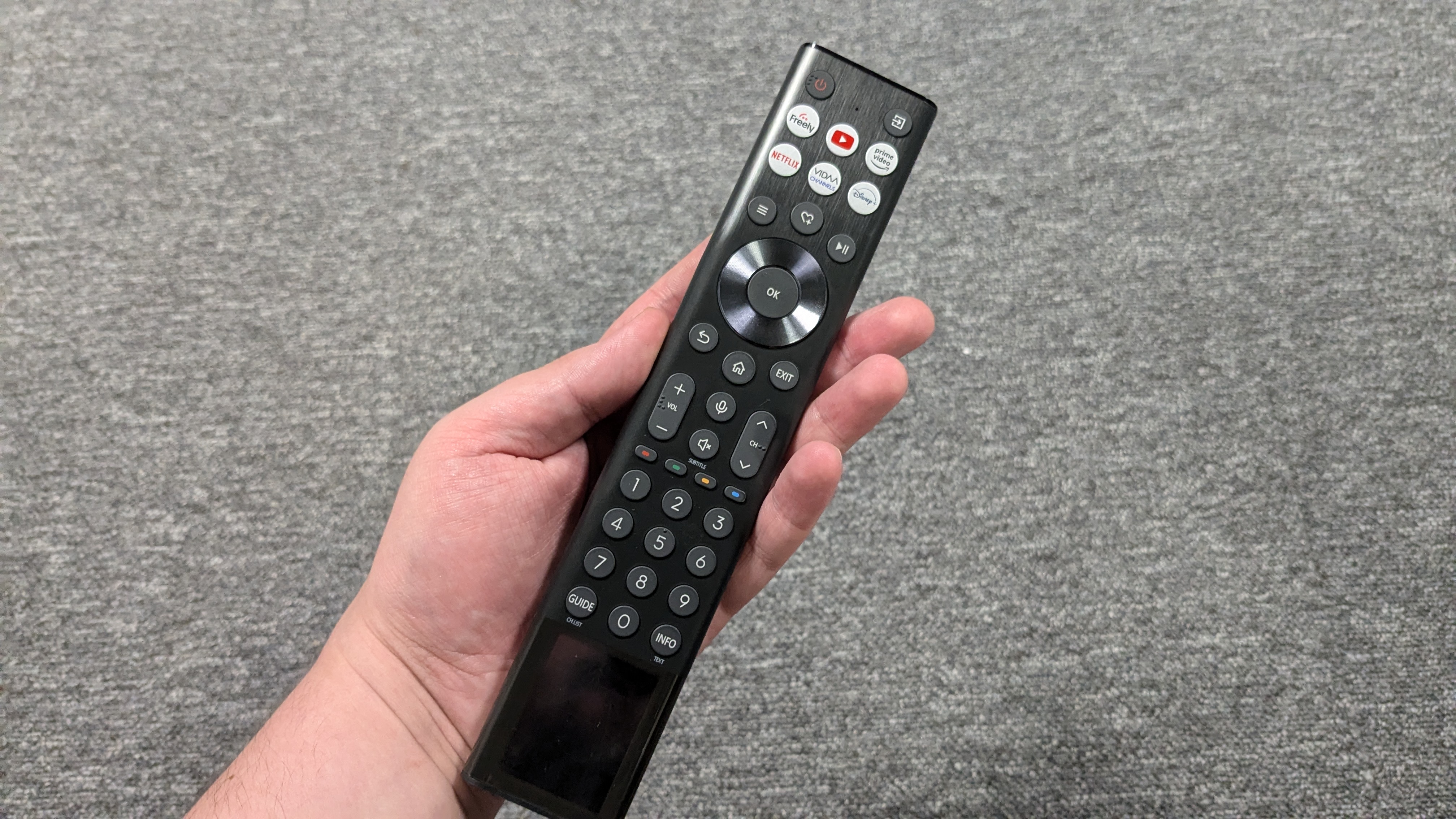
Hisense U7N review: Value
- Excellent value (in the US)
- Cheaper than many rivals
- Crowded mini-LED TV market
Although the U7N generally represents good value, it is a significantly better value in the US. The 65-inch model I tested dropped as low as $799 since launch, which for a TV with this many features and this picture quality level is simply phenomenal. Rival sets such as the Samsung QN85D are priced at $1,699 for a 65-inch model, while premium mini-LED options such as the Sony Bravia 9 cost $2,999 for the same screen size.
In the UK, the margin is somewhat narrowed, though the U7N is still priced cheaper than many of its rivals. The 65-inch U7N currently sits at £1,599, while the Samsung QN85D is priced at £2,099 and OLED options like the LG B4 are priced at £1,699 in a 65-inch size. So even though the U7N is still cheaper and provides plenty of features, you’re not quite getting the same bang for your buck as in the US.
But wherever you are, it is hard to argue just how many bases the Hisense U7N covers at the price it does, with its great overall picture quality, stacks of gaming features and good smart TV platform. With the money you save with the U7N, you can add a Dolby Atmos soundbar, such as the brilliant Hisense AX5125H.
- Value score: 4.5/5
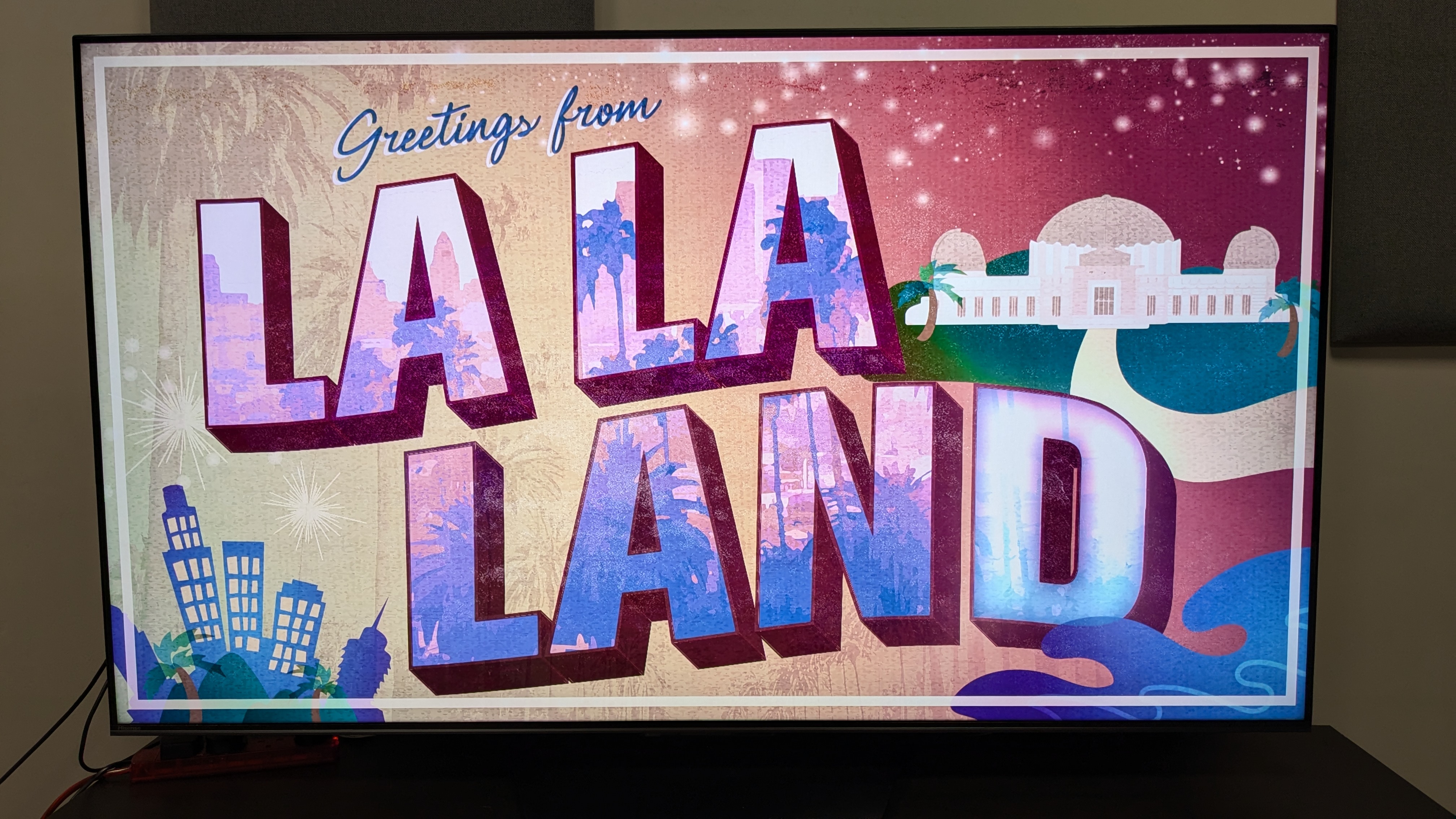
Should I buy the Hisense U7N?
| Attributes | Notes | Rating |
| Features | Plenty of gaming and features, full HDR support and good picture performance | 4.5/5 |
| Picture quality | Bold color and good contrast but picture requires setup | 4/5 |
| Sound quality | Decent dialogue and bass levels, but lacking virtual surround sound and soundstage | 3.5/5 |
| Design | Solid, stable design if not a little boring | 4/5 |
| Smart TV & menus | VIDAA provides plenty of settings to play with, but sometimes struggles in performance | 4/5 |
| Gaming | Stacked with gaming features, but only two HDMI 2.1 ports | 4.5/5 |
| Value | Cheaper than rivals but doesn't sacrifice on features or performance | 4.5/5 |
Buy it if...
You want great picture quality
The U7N delivers dynamic pictures for both movies and gaming that look more premium than the price you pay.
You want a TV for gaming
4K 120Hz, 144Hz, VRR, and Dolby Vision gaming are just some of the features the U7N offers that make it ideal for PS5 and Xbox Series X
You want real value from your TV
The U7N offers similar features and performance to rival sets from Samsung and Sony but has a lower price tag.
Don't buy it if...
You don't want to adjust picture settings
To get the best out of the U7N, setup is required, and that involves digging into the nitty gritty of its picture settings.
You want the perfect picture
Like a lot of mini-LED TVs, the U7N suffers from backlight blooming. To avoid this, you'll have to fork out more for premium mini-LED or OLED TV.
You need the best built-in sound
It may be adequate for most, but the U7N's sound feels limited and contained. Want better TV sound? Look to Sony.
Also consider...
| Row 0 - Cell 0 | Hisense U7N | Samsung QN85D | Hisense U6N | Samsung QN90D |
| Price (65-inch) | $999 / £1,599 / AU$2,299 | $1,899 / £2,099 / AU$2,999 | $799 / £1,299 / AU$1,399 | $2,699 / £2,699 / AU$3,999 |
| Screen type | Mini-LED | Mini-LED | Mini-LED | Mini-LED |
| Refresh rate | 144Hz | 144Hz | 60Hz | 144Hz |
| HDR support | Dolby Vision/HDR10+/HDR10/HLG | HDR10+/HDR10/HLG | Dolby Vision/HDR10+/HDR10/HLG | HDR10+/HDR10/HLG |
| Smart TV | Google TV (US/Aus) / VIDAA (UK) | Tizen | Google TV (US/Aus) / VIDAA (UK) | Tizen |
| HDMI ports | 4 (2x HDMI 2.1, 2x HDMI 2.0) | 4x HDMI 2.1 | 4x HDMI 2.0 | 4x HDMI 2.1 |
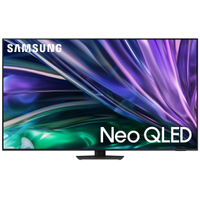
Samsung QN85D
The Samsung QN85D is arguably the U7N's closest competitor, offering similar features and performance. Pictures appear more natural and Tizen is a better smart TV platform, but you'll be paying a lot more and the gap is tough to justify. We are currently testing this TV and will have a full review live soon.
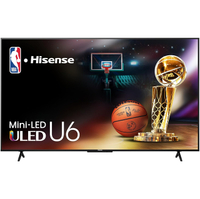
Hisense U6N
The step-down model from the U7N, the U6N doesn't offer the same level of features or picture performance. It is cheaper than the U7N, however, and the performance it gives for the price is admirable. We are currently testing this TV and will have a full review live soon.
Samsung QN90D
The Samsung QN90D is a more premium mini-LED option when compared to the U7N. Although it's pricier, you'll no doubt be getting better picture performance, especially for daytime sports viewing. There isn't much between them in terms of gaming features, so it does come down to picture vs price.
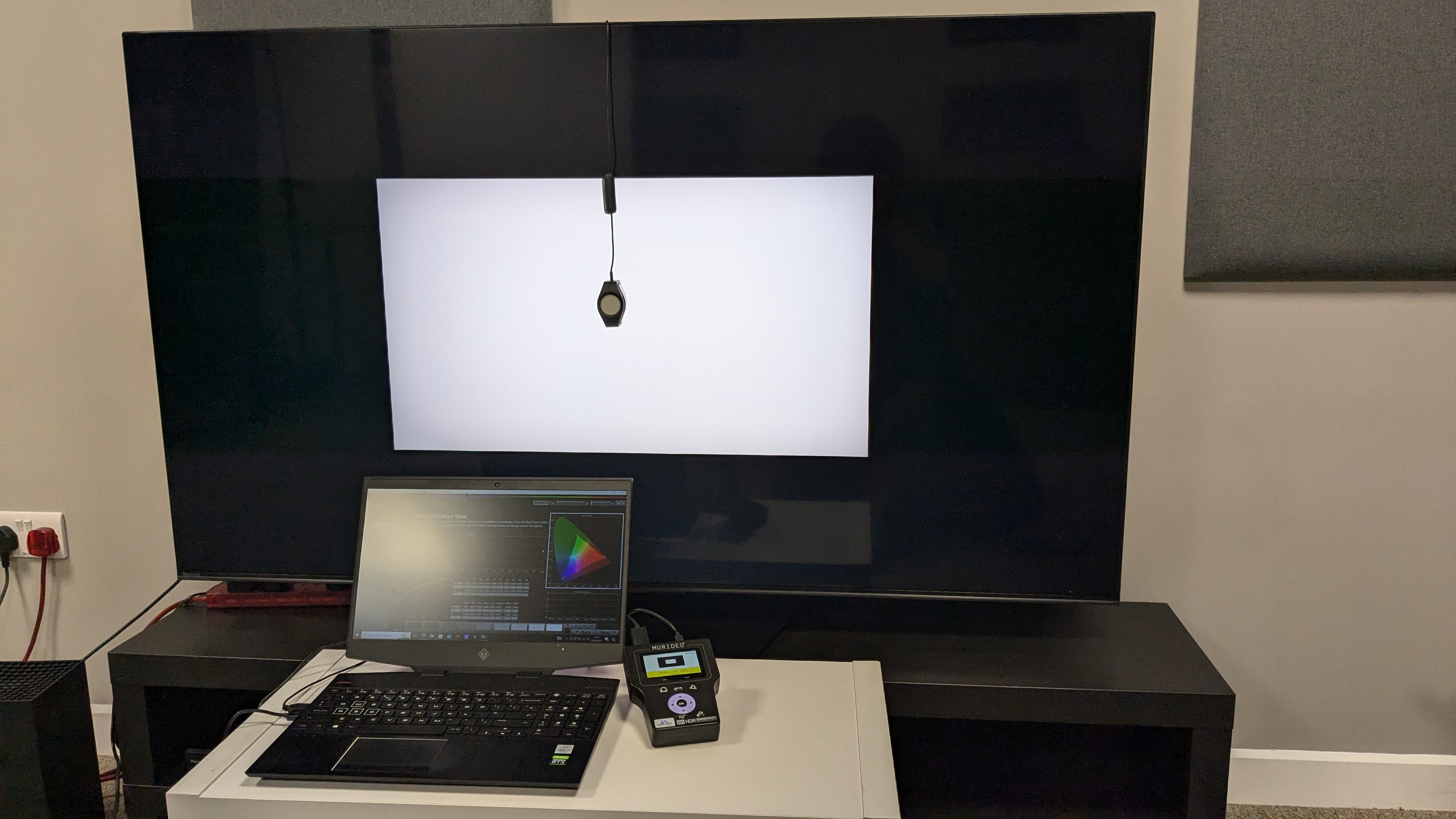
How I tested the Hisense U7N
- Tested in varying lighting conditions
- Measurements taken using Calman calibration software
- Tested using both SDR and HDR sources
My first step in testing the U7N was casual viewing to establish the most accurate out-of-the-box picture preset using a variety of sources such as broadcast TV and DVD, 4K Blu-ray and 4K streaming.
I then used several reference scenes from various movies, TV shows and sports streams to judge the U7N on picture criteria including contrast, color, black levels, motion handling and upscaling. I also tested it built-in sound quality for speech, bass, virtual surround sound processing and directional sound.
To test the U7N's gaming performance, I used an Xbox Series X console, primarily playing Battlefield V.
Moving onto objective testing, I analyzed the U7N's SDR and HDR brightness, HDR color gamut coverage (both UHDA-P3 and BT.2020) and grayscale and color accuracy. For this, I used a test pattern generator and colorimeter, recording the results with Portrait Displays' Calman calibration software.
I also measured the U7N's input lag in milliseconds using a Leo Bodnar 4K HDMI Input lag tester while the U7N was in Game mode.
For a more detailed breakdown, check out our guide on how we test TVs at TechRadar.
- First reviewed: June 2024
- Read TechRadar's review guarantee

James is the TV Hardware Staff Writer at TechRadar. Before joining the team, he worked at a major UK based AV retailer selling TV and audio equipment, where he was either telling customers the difference between OLED and QLED or being wowed by watching a PS5 run on the LG 65G2. When not writing about the latest TV tech, James can be found gaming, reading, watching rugby or coming up with another idea for a novel.
